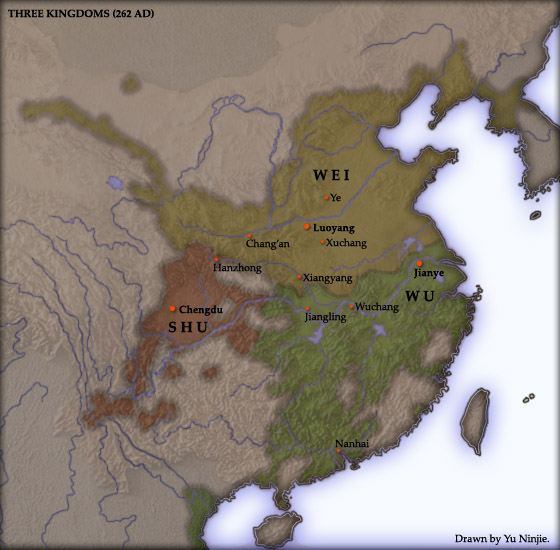


In 221, Liu Bei named himself Emperor of the Han Empire in Shu Han. He established his capital at Luoyang in Cao Wei. Cao Pi was thereafter known as Emperor Wen and only reigned until the year 226 when he died. Caocao died in 220 AD and was succeeded by his son Cao Pi who forced Xian, the last Emperor of the Han Dynasty to abdicate his throne in 220. In his attempt to control the entire empire, Caocao ultimately became a major contributor to its downfall. The aftermath of the Battle of Red CliffsĪfter Cao was defeated in 208 at the Battle of Red Cliffs, China was divided into 3 spheres of influence. However, only an estimated 16 million people were registered during the Jin Empire census of 280 AD, never mind that the Jin Empire and the preceding Han Empire comprised of the exact same territory. A 156 AD census during the Han Empire registered an estimated 54 million people. These deaths and migrations led many people to lose their land and property such that when the official census was taken during the Three Kingdom Period, a marked drop in the number of households was registered. During its final decades, the Han Empire witnessed fighting between regional rulers, the imperial court, and the peasant armies and bands that resulted in the deaths of many people, while many others migrated in search of safety. This was in keeping with the ancient belief about the “Mandate of Heaven” which stated that natural disasters would generally mark the end of the rule by a dynastic clan in control of an empire in the region. Later in the year 280, the Jin Dynasty was able to conquer Dong Wu.Īt the end of the Han era, there were uprisings by the common people, as well as natural disasters that led to its decline. The Jin Dynasty was able to take control of Cao Wei and conquer Shu Han, thereby forming the Jin Empire (263-420). The population of this region was reduced by the natural disasters and warfare experienced at the end of the empire, as well as during the Three Kingdoms Period. The Han Empire broke up into three economic geographic regions that were separated by the natural boundaries of the Yangtze River and central mountains which were home to the Three Gorges. The situation was further compounded by great conflicts within the dynastic court itself, which resulted in many killings and assassinations amongst court officials as well. These included natural disasters and rebellions that immensely eroded the power of the dynastic court. Various factors led to the decline and final end of the Han Empire. The end of the Eastern Han Empire (AD 25-220) was marked by its division into 3 regions headed by leaders Cao Cao (155-220 CE) who had control over the area north of the Yangtze River known as Cao Wei Liu Bei (161-223) who reigned over an inland region known as Shu Han, which included Sichuan to the southwest and Sun Quan (182-252) who had control of the southeastern region known as Dong Wu, which means Eastern Wu.


 0 kommentar(er)
0 kommentar(er)
